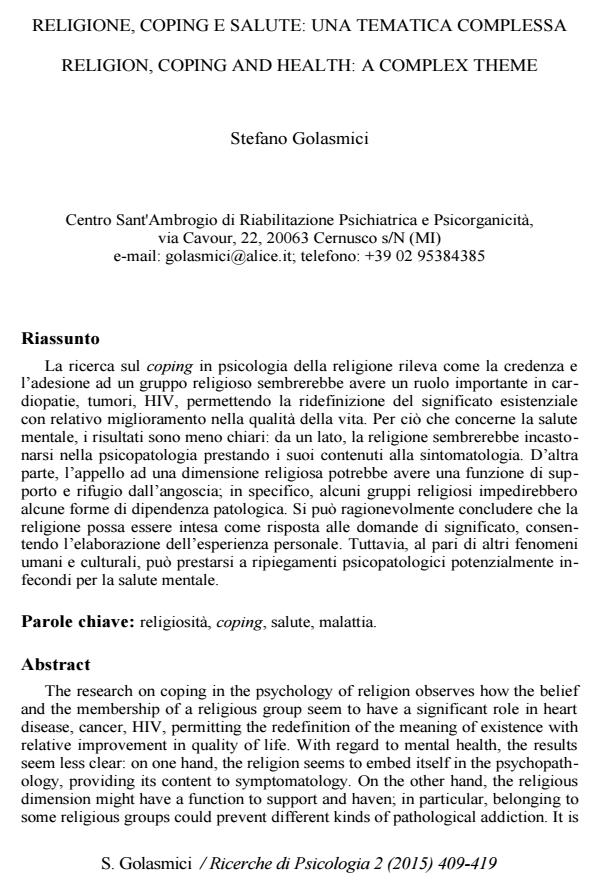Religion, coping and health: a complex theme
Journal title RICERCHE DI PSICOLOGIA
Author/s Stefano Golasmici
Publishing Year 2015 Issue 2015/2
Language Italian Pages 11 P. 409-419 File size 175 KB
DOI 10.3280/RIP2015-002009
DOI is like a bar code for intellectual property: to have more infomation
click here
Below, you can see the article first page
If you want to buy this article in PDF format, you can do it, following the instructions to buy download credits

FrancoAngeli is member of Publishers International Linking Association, Inc (PILA), a not-for-profit association which run the CrossRef service enabling links to and from online scholarly content.
The research on coping in the psychology of religion observes how the belief and the membership of a religious group seem to have a significant role in heart disease, cancer, HIV, permitting the redefinition of the meaning of existence with relative improvement in quality of life. With regard to mental health, the results seem less clear: on one hand, the religion seems to embed itself in the psychopathology, providing its content to symptomatology. On the other hand, the religious dimension might have a function to support and haven; in particular, belonging to some religious groups could prevent different kinds of pathological addiction. It is reasonable to conclude that religion can be understood as a response to the questions of existential meaning. However, like other human and cultural phenomena, religion can potentially be used by psychopathological disorders or be a potentially dangerous factor for mental health.
Keywords: Religiosity, coping, health, disease
Stefano Golasmici, Religione, coping e salute: una tematica complessa in "RICERCHE DI PSICOLOGIA " 2/2015, pp 409-419, DOI: 10.3280/RIP2015-002009